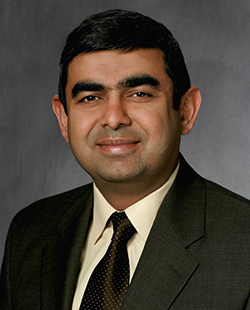SAP's Vishal Sikka on SaaS

One of the most interesting aspects of last week's unexpected and momentous executive reshuffle at SAP was the promotion of CTO Vishal Sikka to join the company's powerful Executive Board. Coupled with the promotion of product development chief Jim Hagemann Snabe to the role of co-CEO alongside sales chief Bill McDermott, it signals an increased emphasis (some would say long-overdue) on technology and product innovation in SAP's immediate future.

Two themes dominated the conversation, and together they embody the dilemma that SAP and every other established enterprise software vendor confronts today:
- Cloud brings a disruptive opportunity to do things differently
- Customers have massive investments in on-premise IT
SAP's challenge is to embrace the first without trashing the second. And to do that even though customers are moving at an enormously diverse range of velocities, with some eager to embrace the leading edge of opportunity while others want to preserve their existing infrastructure and avoid unnecessary change for as long as possible. Accommodating those different rates of change across the installed base while still moving forwards is, concluded Sikka, "the biggest challenge we have." Perhaps it was the need to better address that challenge that led to last week's management shake-up.
At the core of the strategy, inevitably, is an assumption that cloud and on-premise will continue to co-exist. "The landscape of existing customers is still highly heterogenous," said Sikka. Therefore the various on-demand offerings being developed under John Wookey's direction, he explained, are "designed around this heterogeneity." The key to co-existence of cloud services with each other and with on-premise assets, he went on, is to introduce some kind of hub or aggregation mechanism that lets customers run services in the cloud while still preserving the integrity of their master data. Determining which instance is the master in any transaction is a critical problem that needs to be addressed in the cloud environment, he said. It's characteristic of SAP to focus on this issue — more than anything else, its reputation rests on helping customers assure the integrity of core transactional data. It's right also to focus on this as a special challenge in the highly dispersed, location-independent environment of cloud computing. SAP will likely bring something to market to meet that challenge, said Sikka, without going into details, except to say that "in most cases, that aggregation mechanism is best run in the cloud."
As for the opportunities that cloud computing brings, he was adamant that SAP sees it as a chance to innovate:
"Why do the same thing on a different paradigm? Why not do a new thing?" he demanded, citing SAP's earlier breakthrough with its flagship R/3 platform as a case in point. "A new thing on a new paradigm is more interesting. The dramatic success of R/3 was business process re-engineering on a three-tier architecture ... We want to leverage the cloud to do new kinds of things, not just to do the existing things better."
As to what those new things might be, Sikka suggested a range of ideas for "futuristic" applications such as real-time search across enterprise information sources, collaborative design, complex supply chain planning, contractor management, micro financing and sustainability. These applications introduce questions of how to manage planning, risk management and other processes around these new capabilities, he said. And in what might have been an allusion to the recently unveiled 12sprints collaboration service, he spoke of, "the whole paradigm you see with Google and Facebook of doing social networking, online integrated analytics, looking at people's behavior and writing new applications for that behavior."
With Sikka now on the Executive Board — with the backing, say those in-the-know, of company founder and Chairman Hasso Platner — it seems likely those initiatives will gain new impetus. But SAP's challenge will still be to maintain that delicate balancing act of introducing the new without breaking what customers already have installed. Can the company's technology and product strategy offer enough flexibility to satisfy the innovators as well as the conservatives? Time will tell, but it's a tough problem to fix.